
|
Very few archeological sites in the world can deliver the experience the ruins of the city of Pompeii deliver, located near Naples, Italy. In 79 C.E., Mount Vesuvius erupted and covered the Roman town in 12 meters (40ft) of ash, preserving it for 1,700 years, along with the unlucky inhabitants who could not get away, effectively freezing time. During the 18th century, archeologists began digging up the ruins of the city, exposing various buildings and objects that can now provide us with invaluable information about the daily lives of the citizens of the Roman Empire. Whether you investigate the shops and homes, tour the villas of the wealthy, or admire the large temples, you can tell that Pompeii is one of the most fascinating archeological sites in the world. Any visitor will do well not to miss these 10 specific sites in Pompeii, which will send you back in time to the times of the ancient Roman Empire. |
|
1. The Temple of Apollo |
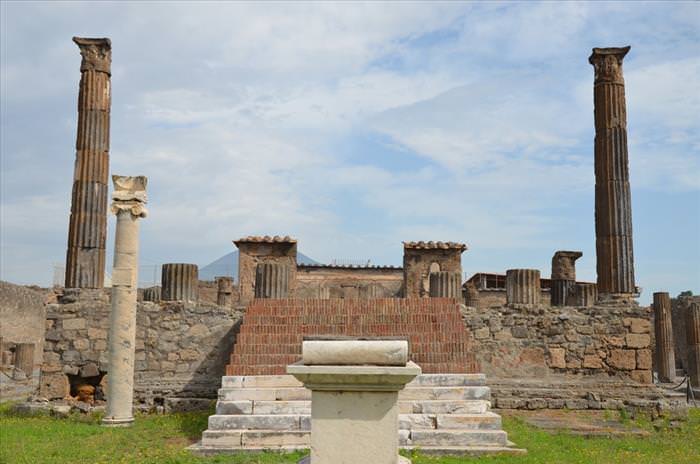 |
|
The oldest building in Pompeii is the temple of Apollo, which faces the city’s forum, and is a prime example of the architectural changes that took place between its construction in the 6th century B.C.E. up until 79 C.E., when the city was destroyed. The original Etruscan design was restored by the Greeks, and was later expanded by the Romans, who added a pillared enclosure. The majority of the bronze statues found in the temple were transferred to a museum in Naples, but in their place stand life-like replicas of Apollo and Diana. |
 |
|
2. House of the Vettii |
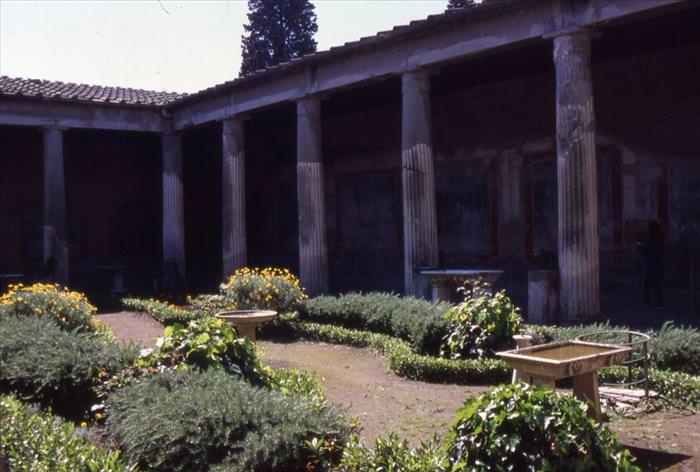 |
|
On the western side of Pompeii, you can find the House of the Vettii, which is one of the best-preserved villas in the city. The house was renovated after a major earthquake in 62 C.E., and now houses a refreshing interior that includes several gorgeous frescoes, painted over a black wall with red and yellow frames. The villa was built to serve the rich owners, and allowed them to entertain guests in several rooms that surround a main yard. In between the columns, you can find luxurious fountains, elaborate statues, and smaller water basins. Many of the original statues and antiques were restored to their original state, allowing visitors to step into the home of a rich Roman citizen in 79 C.E. |
 |
|
3. Lupanar |
 |
|
Pompeii’s Lupanar was the largest brothel in the ancient city. Located on the eastern side of the forum, it contains 10 small rooms with very few furnishings and a brick platform with mattresses that served as beds. Many of the wall paintings display sexual acts, but more surprisingly, archeologists also discovered Roman graffiti, written by both the prostitutes and their clients. Some of the graffiti becomes correspondence between repeating customers, providing a slightly different outlook on the history of the city... |
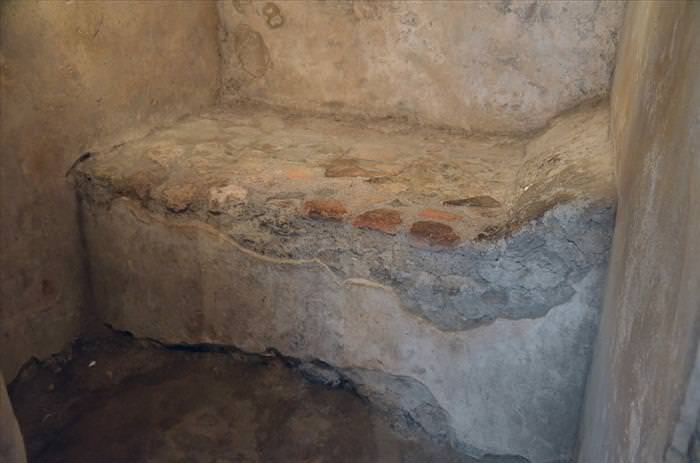 |
|
4. House of the Tragic Poet |
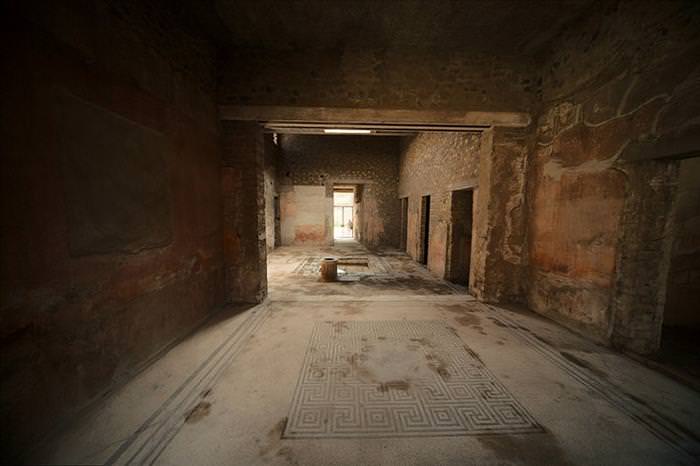 |
|
On the far western part of Pompeii stands one of the most renowned buildings in the city, famous for the very large frescoes and mosaic floors. One of the mosaics depicts a group of actors behind the scenes, preparing to put on a show. This discovery led archeologists to assume that this was the home of a famous poet or writer. In the atrium, visitors will find paintings of mythological beasts, and by the entry to the house, those with a keen eye will note a mosaic spelling “cave canem”, which translates to “Beware of dog!” |
 |
|
5. The Forum |
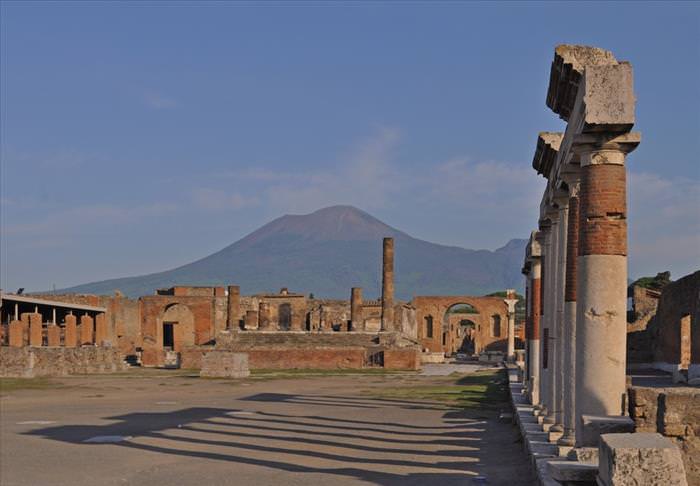 |
|
The center of city life in Pompeii was the forum, a rectangular, open area that served as the political, cultural, and commercial center of the city. The forum was the home of the market, courthouse, bathhouses and temples. The local basilica was designed in a cross-shape, which was later used by many churches. Despite the devastation to many of the buildings, and the fact that very few of the supporting pillars of the surrounding portico remain standing, the sheer size of the forum is still very impressive. Visitors of the forum will easily be able to imagine the hustle and bustle of ancient Pompeii. |
 |
|
6. House of the Faun |
 |
|
The largest private villa in all of Pompeii. This building was so immense; it took over a whole city block. In the House of the Faun, archeologists found some of the most important artworks in the city, including a mosaic of Alexander the Great, depicting him in battle with Darius III, ruler of the Persian Empire. The house is named after another archeological finding, a bronze statue of the Faun. The original statue and mosaics are preserved in Naples’ archeological museum, but the house still contains an incredible work of geometric shapes and patters in the floor. |
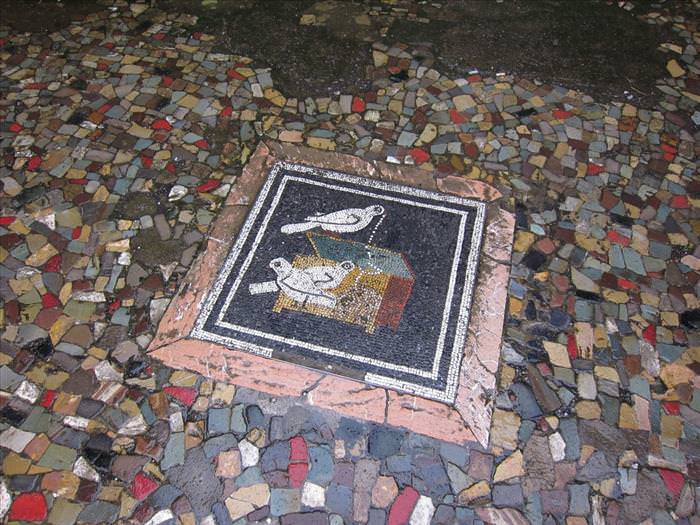 |
|
7. Bathhouses |
 |
|
Bathhouses are a common site in every Roman city, and wealthy citizens even had private ones in their homes. The public bathhouses were open to people of all classes, including slaves, but men and women usually used different houses. The bathhouses served as both a meeting place and as a place of cleansing. Pompeii had three different bathhouses: the Stabian baths, central baths, and the forum baths. The Stabian baths are the most ancient bathhouses in the Roman Empire. The forum baths are the smallest in Pompeii, but at the same time, they are the most decorated. In Pompeii, there were no separate baths for men and women, so each gender had allocated times. |
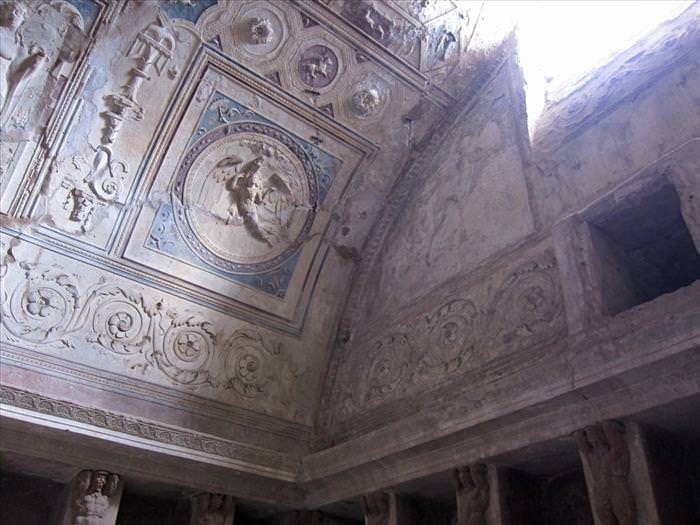 |
|
|
|
8. Amphitheater |
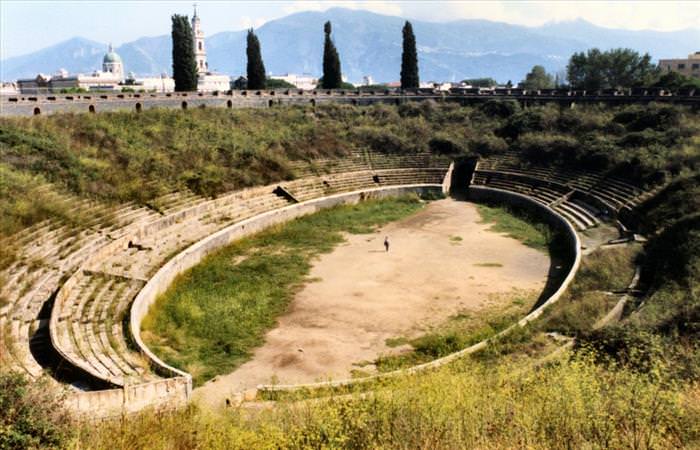 |
|
Pompeii’s amphitheater was constructed around 70 B.C.E., and is the oldest surviving amphitheater in the world. It is also the most ancient Roman amphitheater that was constructed of stone; before it, all amphitheaters were made of wood. The second oldest amphitheater is the Colosseum in Rome, built nearly a century later. The place was known as the “Spectacula”, since the word for amphitheater (amphithehatrum) did not yet exist. The theater could house 20,000 spectators, which consisted of Pompeii’s entire population in that time. In 59 C.E., riots erupted during a sporting match between locals and fans from a neighboring city, which resulted in the senate prohibiting any sort of games there for 10 years. |
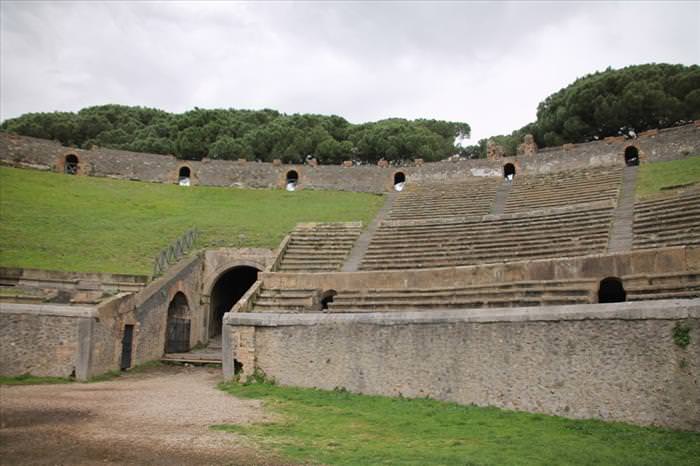 |
|
9. Plaster Molds |
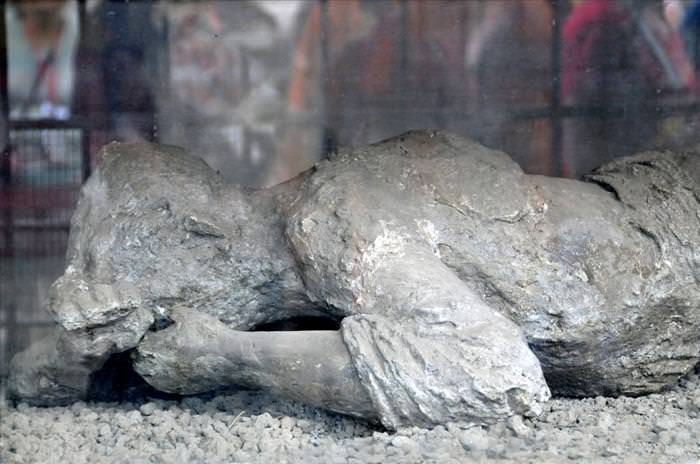 |
|
The people who were unlucky enough to be trapped in Pompeii during the volcanic eruption were buried to death under toxic, burning ashes that fell from the skies. In 1870, Giuseppe Fiorelli, the Italian archeologist who worked to preserve Pompeii, used a technique of liquid plaster molding to create copies of the spaces left by former residents who perished in the disaster. The resulting statues depict people, animals, and various objects throughout the city. During WWII, the building that housed these statues was severely damaged, and the statues are now on display throughout the city, as well as in Naples’ archeological museum. The highest number of people (13) were found in a local fruit garden, where they tried to flee for their lives. |
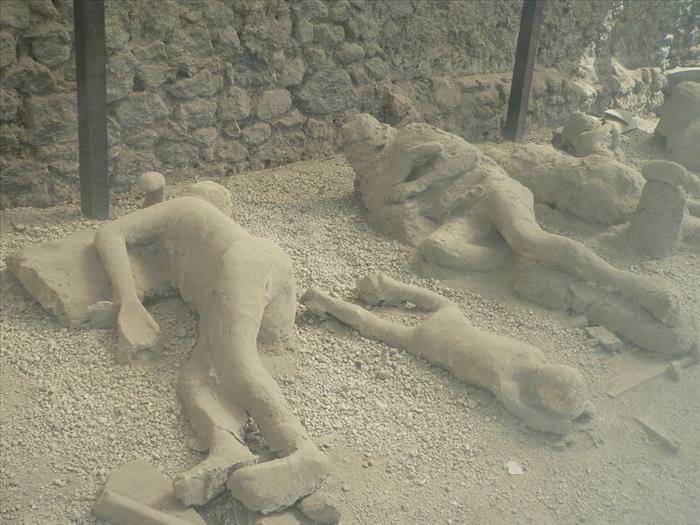 |
|
10. Villa dei Misteri |
 |
|
In the outskirts of Pompeii, on the road leading to the local harbor, lies a well-preserved villa called “Villa dei Misteri” (Mystery Villa). The Roman villa is home to gorgeous frescoes depicting a woman undergoing an initiation into the forbidden cult of Dionysus, the god of the grape harvest, wine-making and wine, of ritual madness, fertility, theater and religious ecstasy in Greek mythology. The villa is named after the depicted secret ceremony. The red background of the frescoes tell the initiation ceremony with incredible detail, and outside you can find an impressive balcony with luxurious rooms, all of which create an amazing sight. |
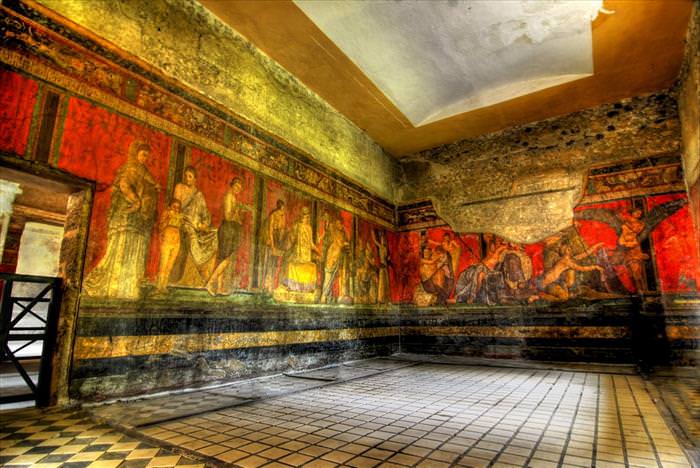 |
|
None of the photos you’ve seen can even begin to describe the powerful experience one goes through walking through the city. Below you will find a video that will take you on a tour of the ruins of Pompeii. If you’re ever in Italy, make a point of visiting this city and seeing its history with your own eyes. |
| Photo credits: Carole Raddato, Ian Scott, Peter Stewart, Penn State University Libr, headzsquare studios, Carole Raddato, MatthiasKabel, Mitch Barrie, Harshil Shah, scruff monkey, Riccardo Cuppini, Sean Munson, Amphipolis, John McLinden, Rachel Clarke, Simon & Vicki, Dennis Jarvis, momo |